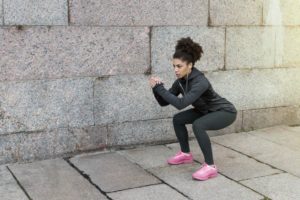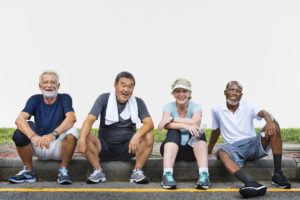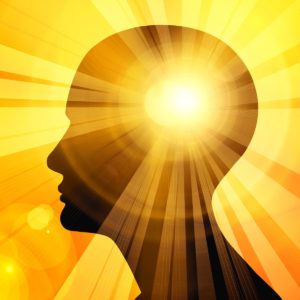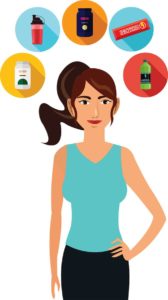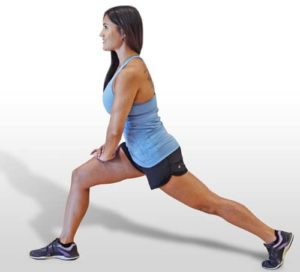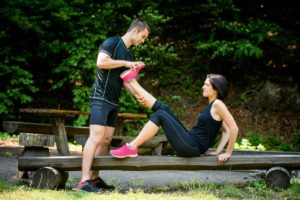Injury / Injury Prevention
Getting to the Bottom: The Ischial Tuberosity
The posterior aspect of the body, along with its muscles, tendons, bones and attachments, is easy to overlook because it’s out of sight and, therefore, often out of mind. Until, that is, pain occurs. The ischial tuberosity—also known as the “sit bones” or even “sitz bones” (from the German word sitzen) (Garikiparithi 2017)—has many different connections, although it is mainly associated with the hamstring muscles (Drake et al. 2010).
Pillars of Functional Training for Active Aging
Healthy aging is more than the absence of disease, according to the World Health Organization (WHO): “For most older people, the maintenance of functional ability has the highest importance” (WHO 2015). Colin Milner, founder and CEO of the International Council on Active Aging in Vancouver, British Columbia, echoes these comments. “When looking at the healthy aging market today, the focus is all about function,” he says.
130/80 = High Blood Pressure
For the first time since 2003, the American College of Cardiology and the American Heart Association have produced a substantial report updating blood pressure recommendations. People with a reading of 130/80 are now classified as having high blood pressure. This is down from 140/90.
According to the ACC, this means 46% of U.S. adults will now be categorized as having hypertension.
Those in the “hypertensive crisis” category require medication intervention and immediate hospitalization if there is organ damage, according to the report.
The Achilles Tendon
Many fitness professionals have dealt with an Achilles tendon injury, either their own or a client’s. The largest and strongest tendon in the body, the Achilles connects the lower-leg muscles and calf to the heel. “Synchronous functioning” of the tendon and calf is crucial for many activities, including standing on tiptoe, running, jumping and climbing stairs (Bhimji 2016).
Dutch surgeon Philip Verheyen named the tendon (after the Greek hero Achilles) in 1693. Previously, it was known as “tendo magnus of Hippocrates” (van Dijk 2011).
The Anatomy of Functional Training Risks
Many clients can’t seem to get enough of workouts that meld functional movements with high-intensity resistance training. Indeed, workouts using dynamic, high-intensity, full-body movements are great for strength and health—provided the body functions properly and exercisers use correct technique.
The Pelvic Floor: Base Support & More
Does the pelvic floor get the props it deserves? Many fitness professionals who specialize in women’s health think it warrants more respect and attention. Trista Zinn, founder of Hypopressives in Toronto, says the pelvic floor is “overlooked and misunderstood by many.” She adds, “Our quality of life and athletic performance literally rest on [the pelvic floor’s] synergistic ability to function with the core as a whole.”
Some Cancers Are a Weighty Issue
About 40% of cancer cases are related to overweight and obesity, according to a new report from the Centers for Disease Control and Prevention.
Social Support and Seniors
Fitness pros working with seniors deal with the physical and cognitive losses of aging every day. But what about the social support losses?
Vibration Boosts Effects of Foam Roller
Traditional foam rollers have become widespread in the fitness setting. Recently, some manufacturers have added vibration technology to their products. Does the added element provide any extra benefit? Researchers from California State University Dominguez Hills in Carson, California, the National Academy of Sports Medicine in Chandler, Arizona, and Nova Southeastern University in Fort Lauderdale, Florida, wanted to find out.
Abdominal Separation and the Female Core
Imagine a balloon—a standard latex party balloon. You put a tiny seed in it. A watermelon starts to grow. You pick up the balloon with the watermelon growing inside. You carry it with you all day. You sit with it, stand up with it, run with it, take it wherever you go. What happens? How long will that balloon hold up?
Now imagine the same scenario with a stronger balloon, a Mylar balloon, with reinforced seams.
Getting Better at Recovery
A growing body of research is shedding more light on the importance of resting after exercise—providing vital clues on measuring and enhancing the recovery process. These insights are welcome news to personal trainers and coaches who see the consequences of overtraining and inadequate recovery every day. This column discusses some of the latest research on assessing and managing recovery and advises on tactics that may help your clients recover from exercise.
Protecting the Aging Brain
Study after study shows that physical activity, diet and other lifestyle factors keep the brain healthy as we age—contrary to the popular notion that cognitive function inevitably declines in the later years of life.
A Fine Balance
No training program is complete without at least some focus on balance, an ability many people take for granted. We monitor the environment and our relationship to gravity quite automatically, thanks to the vestibular system, which helps us maintain our center of mass over a base of support. A properly functioning balance system allows us to see properly while in motion;
helps us orient ourselves to gravity;
determines direction and speed; and
makes automatic postural adjustments (Vestibular Disorders Association).
Mobility & Mindfulness
Suspension exercise continues to grow more popular, in part because of its versatility and adaptability. It’s especially effective for mobility because it provides gentle traction that improves muscle flexibility, joint support and spinal decompression.
The sequence below flows seamlessly, stretching all major muscle groups while augmenting joint mobility. It’s a great finish for any type of workout.
Turn Negatives Into Positives
I was a new group fitness instructor taking someone else’s muscle-toning class. “You’re not going low enough,” the instructor yelled at me from across the crowded room. As flames of embarrassment burned my cheeks, I dropped lower into the Romanian dead lift even though I had just come from teaching my seventh cycling class of the week and my body was spent. But this was what the class required, I rationalized, and I was fit—I should be able to keep up.
Unfortunately, I couldn’t keep up, and as a result, I gave myself a nagging lower-back injury.
Protein Supplements: Which “Whey” to Go?
Fitness professionals working with enthusiastic resistance-training clients inevitably face questions about protein supplementation.
Protein supplements are some of the most common and most popular nutritional products on the market today (Pasiakos, Lieberman & McLellan 2014). But with all this abundance, it’s easy to get lost in the colorfully stocked shelves and become confused about which types to buy, when to use them and how much to take.
Shoulder Pain and Injury Prevention
Shoulder pain and injuries make it harder to exercise and play sports. Damaged shoulders also limit basic functions, impair quality of life and disturb sleep (Acton 2011). What’s more, research suggests that almost a quarter of your client base will experience shoulder pain/injury at one time or another (Ghosh 2012).
Exercise for Seniors
Certain types of exercise for seniors can lessen the chance that you develop more severe problems from the physical challenges of aging.
Hit the Hips!
Eager class participants want to tap into their highest potential, and group fitness instructors have been acknowledging this by offering workouts that are more explosive, more powerful and fuller in range than ever before. However, intense, dynamic workouts demand a warmup that truly prepares the body. Specifically, you must target the hips—hip flexors, piriformis, glutes and hip rotators—to avoid possible tweaks from all those lunges, squats and burpees (not to mention repetitive stress from cycling and running).
How to Handle Exercise-Related Muscle Cramps
You’re running along your favorite path and then it happens: You get a cramp in your hamstring. While theories abound, there is limited consensus on why exercise-associated muscle cramps (EAMC) develop and how to get rid of them. A research review from the Brooks College of Health at the University of North Florida may clear up the confusion.
The review, published in Muscle & Nerve (2016; 54, 177–85), featured a series of studies analyzing the etiology and treatment of EAMC. Here’s what they learned:





